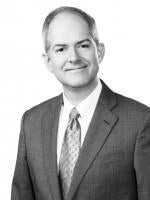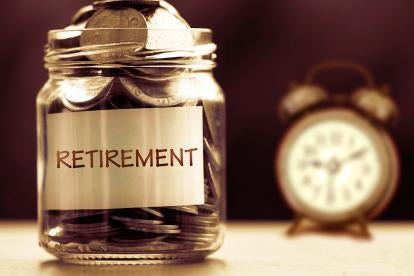The Setting Every Community Up for Retirement Enhancement Act of 2019 (SECURE Act) was signed in December 2019. Three years later, the President signed the SECURE 2.0 Act of 2022 (SECURE 2.0), which was a component of the Consolidated Appropriations Act of 2023, a “must pass” appropriations bill.
Many changes made via the SECURE Act have not yet taken effect, and SECURE 2.0 makes further revisions to some of the same statutes. Further complicating matters, effective dates under SECURE 2.0 range from immediate to 2033 (largely a function of whether the change creates or reduces tax revenue, but also perhaps a function of the complexity of some of the changes). This Client Alert aims to help employers triage the various components of SECURE 2.0 and plan for 2023. Future Client Alerts will focus on changes effective in later years.
Overview
SECURE 2.0 includes more than 90 provisions and is three times longer than the original SECURE Act, which itself made significant changes to qualified retirement plans and IRAs. A few of the more significant changes made via SECURE 2.0 include:
-
Further increases to the age at which required minimum distributions (RMDs) must commence for terminated participants (ultimately increasing to age 75 in 2033)
-
Allowing employers to make matching contributions that take into account student loan repayments made by employees (enabling those repaying student loans to also start building a retirement nest egg, even without making elective deferrals)
-
Allowing employer contributions to be treated as Roth after-tax contributions, if elected by the employee
-
Increasing the amount of Catch-Up contributions allowed by employees and mandating that Catch-Up contributions be treated as Roth contributions for higher earners
-
Reducing the minimum service requirement for part-time employees, who now must work 500 or more hours in two consecutive years in order to be eligible to make elective deferrals under a qualified retirement plan (down from three years under the SECURE Act)
-
Allowing participants to self-certify eligibility for hardship withdrawals (generally enabling employers to get out of the hardship documentation business) and adding penalty-free limited “emergency” withdrawals
-
Mandating automatic enrollment features (with automatic annual deferral increases) for newly established 401(k) and 403(b) plans
-
Increased tax credits to offset plan startup costs for small employers (fewer than 100 employees)
-
Elimination of the requirement that employers attempt to collect inadvertent overpayments to terminated participants
Action Steps
Employers should review all the changes, but many will naturally focus first on changes that became effective immediately upon the enactment of SECURE 2.0 or are effective starting in 2023. Some changes are mandatory, while other changes are optional. Employers should consult with recordkeepers, consultants, and legal counsel to develop a game plan for implementing the SECURE 2.0 changes. Just as important, participants and retirees should be informed about the changes on a timely basis so that they too can plan properly.
This Client Alert focuses on significant retirement plan changes that are effective in 2023 (or became effective immediately upon passage). SECURE 2.0 also contains many changes of narrow application that impact plans such as SEPs, SIMPLE plans, and rural electric co-ops, as well as changes to IRAs that are not addressed here. Future Client Alerts will follow, focusing on changes that become effective in 2024 through 2033.
Changes Effective in 2023 or Upon Enactment (References are to the applicable section of SECURE 2.0)
Small Employer Retirement Plan Start-Up Credits (Section 102)
Companies with 50 or fewer employees can receive a tax credit for 100% of startup costs (up from the prior 50%), for the first three years after a plan is adopted (up to $5,000 per year). An additional $1,000 per employee tax credit for employer contributions to the plan is available, for up to five years after initial adoption. The employer contribution credit is 100% in the first and second years and decreases to 75% in the third year, 50% in the fourth year, and 25% in the fifth year. Employees earning over $100,000 per year (indexed for inflation) cannot generate a tax credit for employer contributions to their accounts. The employer contribution credit phases out for companies with between 51 and 100 employees. The additional employee contribution credits are not available for new defined benefit plans.
Multiple Employer 403(b) Plans (Section 106)
Nonprofit and charitable institutions can now join together to sponsor multiple employer plans (MEPs), which previously were not available to 403(b) plans. In addition, the Treasury Department is directed to eliminate rules that previously stated that an error by one employer in a MEP jeopardized the qualified status of the plan as to all other employers in the MEP (the “one bad apple” rule).
Increase in RMD Age (Section 107)
Participants who attain age 72 on or after January 1, 2023, will not have to take RMDs until they reach age 73 (current RMD age is 72). Participants who attain age 74 on or after January 1, 2033, will not have to take RMDs until they reach age 75.
Participant Incentives for Participating in 401(k) and 403(b) Plans (Section 113)
SECURE 2.0 allows employers to offer de minimis financial incentives to contribute to an employer-sponsored 401(k) or 403(b) plan, such as small gift cards or other token incentives. Such incentives may only be paid by the employer and cannot be paid from plan assets.
Automatic Portability of Cash-Out IRAs (Section 120)
Under existing law, terminated participants with accounts valued at $5,000 or less can be “cashed out” of their retirement plan without the participant’s consent. If the account value is at least $1,000 and the participant does not timely request a distribution or rollover, the cashout must be made via a default IRA held by a retirement plan service provider. Beginning one year from the date of enactment (December 29, 2023), plans can contract with service providers to provide automatic portability of such default IRAs. This would enable an automatic rollover of the amount in the default IRA into the participant’s new employer’s retirement plan, unless the employee affirmatively elects otherwise.
Collective Investment Trusts for 403(b) Plans (Section 128)
Prior to the enactment of SECURE 2.0, 403(b) plans generally could only invest in mutual funds and annuity contracts. SECURE 2.0 allows 403(b) plans to invest in collective investment trusts (CITs), which are trusts holding pooled investments by other ERISA retirement plans. CITs often enable plans and participants to lower their investment fees. However, this change cannot be implemented until Congress changes securities laws that prohibit CIT investments by such plans.
Recovery of Overpayments (Section 301)
Fiduciaries of retirement plans have a fiduciary duty to cause a plan to pay only the benefits that are due. However, errors sometimes occur that result in overpayments to participants, with related plan requests for repayment (with interest). SECURE 2.0 allows fiduciaries to opt not to request repayment of inadvertent overpayments (or to amend the plan to reflect the increased benefit). Fiduciaries that do elect to request repayment would be subject to limitations (including a three-year limit on such actions and prohibition on collection of interest). Rollovers of overpayments also remain valid.
Reduced Excise Taxes for Failure to Take RMDs (Section 302)
Prior law imposed a 50% excise tax on participants who fail to take the full RMD that is required for a given tax year (though retirement plans may enable participants to avoid excise taxes via EPCRS). SECURE 2.0 reduces the maximum excise tax to 25% (10% if the RMD error is corrected within two years).
EPCRS Expansion (Section 305)
The IRS understands that administration of qualified retirement plans is complicated and error-prone. To encourage employers to correct errors, the IRS created the EPCRS. SECURE 2.0 directs the IRS to revise EPCRS within two years to (1) allow more errors to be self-corrected; (2) apply EPCRS to inadvertent IRA errors; and (3) exempt certain failures from the RMD excise tax. Inadvertent failures will generally be eligible for self-correction at any time, as long as they are corrected within a reasonable period after discovery. This would include self-correction of many plan loan failures (a common source of frustration and errors for plan sponsors). Though immediately effective, the IRS has up to two years to issue guidance regarding the changes to the EPCRS and any technical requirements under the revised program.
Repayment of Qualified Birth or Adoption Distributions (Section 311)
The SECURE Act included a provision that allows a participant to make a qualified distribution from his or her retirement plan in the case of the birth or adoption of a child (a QBAD), and such distribution will not be subject to the additional 10% tax under Code Section 72(t). The distribution can be recontributed to a retirement plan at any time and treated as a rollover. However, due to the general three-year statute of limitations under the Code, there is no mechanism to allow someone who took such a QBAD to recontribute it more than three years later and amend their return and receive a refund for taxes that were paid on the distribution. SECURE 2.0 amends the QBAD provisions to restrict the recontribution period to three years effective as to distributions after the date of enactment and retroactively to the three-year period beginning on the day after the date on which such a distribution was received.
Employee Certification of Conditions Supporting a Hardship Distribution (Section 312)
Under prior law, plan sponsors were responsible for policing hardship distributions to participants and gathering certain documentation to support a hardship request. This made some employers hesitant to fully outsource hardship request processing to recordkeepers. SECURE 2.0 allows plans to rely on self-certifications by participants stating that they had an event that constitutes a hardship for purposes of such distributions, that the distribution is not in excess of their financial need, and that they have no other means to satisfy the need. Congress pointed to the success of the Coronavirus-Related Distribution (CRD) program as justification for making the self-certification provisions of the CRD program permanent.
Sole Proprietor Retroactive Plan Adoption and Deferrals (Section 317)
Sole proprietors who adopt a new retirement plan can make employer contributions as late as the tax return due date for the year of adoption, but under prior law could not make elective deferrals on a retroactive basis. SECURE 2.0 allows sole proprietors to adopt a new plan after the end of the tax year and make employer contributions as well as deferral contributions as late as the tax return due date for the year of the deemed adoption, provided the owner is the only employee (the plan is treated as having been adopted on the last day of the tax year pursuant to the original SECURE Act).
Reducing Communications to Unenrolled Employees (Section 320)
Prior law required employers to send various communications regarding retirement plans to eligible employees, whether or not the employee was actually enrolled in the plan. SECURE 2.0 enables plan sponsors to reduce communications to unenrolled participants, requiring only a single annual notice of eligibility to participate (disclosing any associated deadlines) during annual enrollment. Unenrolled participants can still request other information provided to enrolled participants (such as investment option information).
Elimination of Excise Tax on Early Distributions to Terminal Participants (Section 326)
Distributions to participants prior to attainment of age 59-1/2 generally result in a 10% excise tax on the participant. SECURE 2.0 eliminates the excise tax for distributions to participants if their physician certifies that the participant is terminally ill and reasonably expected to pass away within 84 months.
Distributions Associated with Federal Disaster Declarations (Section 331)
Hurricane Katrina was an unprecedented disaster in 2005, and Congress fashioned unprecedented retirement plan relief to assist victims. Since that time, whenever a major disaster strikes, Congress typically revisits the Katrina retirement plan “roadmap” and waives excise taxes on early distributions, allows pro-rated income inclusion over several years, allows recipients to redeposit a withdrawal within three years of the distribution, and loosens plan loan requirements. SECURE 2.0 makes many of these changes permanent for any qualifying federally declared disaster. Up to $22,000 can be withdrawn per disaster without imposition of the 10% early distribution excise tax. Participants can recognize distributions in taxable income over three tax years, and the distributed amount can be recontributed to a retirement plan or IRA within three years starting the day after the distribution date. Distributions to acquire a principal residence that was located in the disaster area can be recontributed if the funds were not ultimately used to acquire a residence. Finally, maximum loan amounts are increased for affected individuals and the maximum loan repayment term increased.
Lump-Sum Offers under Defined Benefit Plans (Section 342)
Many sponsors of defined benefit plans try to reduce their long-term volatility risk with respect to benefits owed to terminated vested participants. This is sometimes done via a temporary “lump sum window” offer that enables such participants to take a lump-sum distribution of a benefit that would otherwise be paid in the form of an annuity. SECURE 2.0 directs the DOL and IRS to issue regulations mandating that more information be provided to participants who are offered such a window, with regulations to be issued by December 29, 2023 (one year from enactment).
Cash Balance Plan Interest Crediting Rate Flexibility (Section 348)
Cash balance plans are defined benefit plans that are typically designed to provide a benefit tied to assumed rates of return that closely mimic the plan’s investments (typically fixed income securities). SECURE 2.0 allows plans to use an interest crediting rate and projections of such rates to retirement that do not exceed 6%. This change will enable sponsors to provide larger pay credits (and larger benefits) for older, long-service employees without violating anti-backloading rules.
Freezing of Variable Rate Premiums for Underfunded Pension Plans (Section 349)
Underfunded defined benefit pension plans must pay PBGC premiums of $52 per $1,000 of unfunded vested benefits in 2023. Prior law required annual increases in the variable rate premium, tied to inflation. SECURE 2.0 immediately freezes the variable rate premium at 2023 levels.
Extended Safe Harbor Correction of Automatic Enrollment Errors (Section 350)
IRS correction guidance allows plans that feature automatic enrollment to correct any auto-enrollment errors (such as neglecting to automatically enroll eligible participants) via a safe harbor procedure that was set to expire on December 31, 2023. SECURE 2.0 makes the safe harbor permanent. Correction requires timely notice to affected employees, correction of deferral amounts within certain deadlines, and making of any matching contributions associated with missed deferrals. Errors must be corrected within nine and a half months of the end of the plan year in which the errors were made.
SECURE Act Technical Amendments (Section 401)
SECURE 2.0 makes several technical and clerical amendments to the SECURE Act, including a clarification that auto-enrollment 401(m) matching safe harbor plans are subject to safe harbor notice requirements under Internal Revenue Code Section 401(k)(13)(E).
SIMPLE IRAs and SEPs Eligible for Roth (Section 601)
SIMPLE IRAs and SEPs can now be offered on a Roth (after-tax) basis.
Employer Matching and Nonelective Contributions Eligible for Roth (Section 604)
Section 401(a), 403(b), and 457(b) plans can immediately start allowing employees to designate employer-matching or nonelective and profit-sharing contributions as Roth contributions. Such contributions must be 100% vested when made in order to receive Roth after-tax treatment. Although this feature is immediately available, employers will need to coordinate with their recordkeepers, payroll providers, and other service providers to ensure that systems and technical needs can be met before offering this feature. Employee communications and election procedures will also need to be developed, and the IRS will need to issue guidance regarding tax reporting and any applicable tax withholding and remittance (employer contributions will not be accompanied by a ready source of funds from which to withhold).
Summary
SECURE 2.0 is a comprehensive law, and its numerous provisions address various aspects of qualified retirement plans. Not all of its provisions will apply to your plan, and others are optional. Employers should carefully review these changes, especially those that are in effect now, to determine which provisions will impact your plan. Your plan must be in operational compliance with all mandatory provisions of SECURE 2.0 (as well as the SECURE Act and other recent legislation) from the effective date of the applicable provisions in order to maintain your plan’s tax- qualified status.
Plan amendments to conform the terms of a qualified plan to the requirements of the law must be adopted by the end of the 2025 plan year (2027 for governmental plans and collectively bargained plans). SECURE 2.0 also formally extended the deadlines for the plan amendments for the SECURE Act and other recent laws (CARES Act and Taxpayer Certainty and Disaster Relief Act of 2020) to the last day of the 2025 plan year.





 i
i


